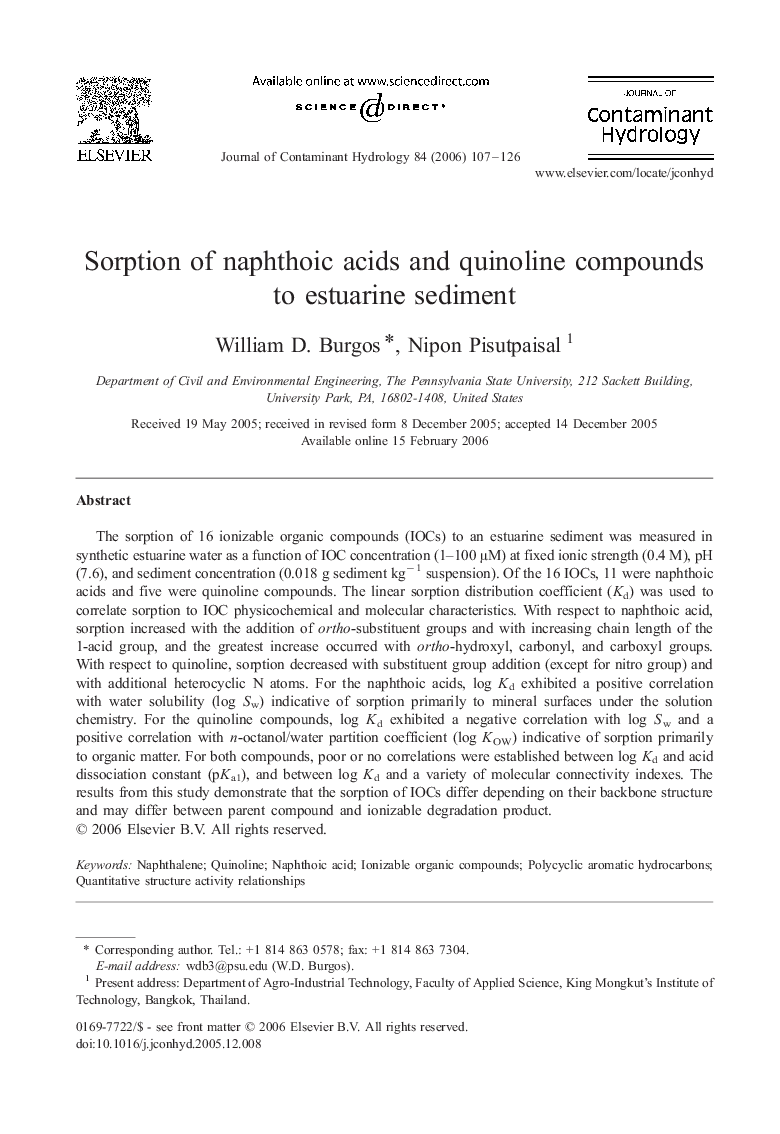| Article ID | Journal | Published Year | Pages | File Type |
|---|---|---|---|---|
| 4547689 | Journal of Contaminant Hydrology | 2006 | 20 Pages |
The sorption of 16 ionizable organic compounds (IOCs) to an estuarine sediment was measured in synthetic estuarine water as a function of IOC concentration (1–100 μM) at fixed ionic strength (0.4 M), pH (7.6), and sediment concentration (0.018 g sediment kg− 1 suspension). Of the 16 IOCs, 11 were naphthoic acids and five were quinoline compounds. The linear sorption distribution coefficient (Kd) was used to correlate sorption to IOC physicochemical and molecular characteristics. With respect to naphthoic acid, sorption increased with the addition of ortho-substituent groups and with increasing chain length of the 1-acid group, and the greatest increase occurred with ortho-hydroxyl, carbonyl, and carboxyl groups. With respect to quinoline, sorption decreased with substituent group addition (except for nitro group) and with additional heterocyclic N atoms. For the naphthoic acids, log Kd exhibited a positive correlation with water solubility (log Sw) indicative of sorption primarily to mineral surfaces under the solution chemistry. For the quinoline compounds, log Kd exhibited a negative correlation with log Sw and a positive correlation with n-octanol/water partition coefficient (log KOW) indicative of sorption primarily to organic matter. For both compounds, poor or no correlations were established between log Kd and acid dissociation constant (pKa1), and between log Kd and a variety of molecular connectivity indexes. The results from this study demonstrate that the sorption of IOCs differ depending on their backbone structure and may differ between parent compound and ionizable degradation product.
